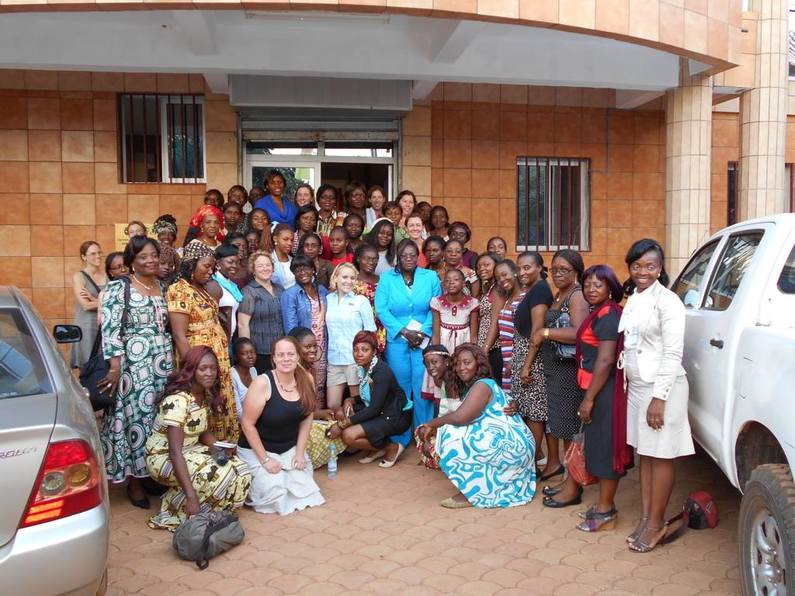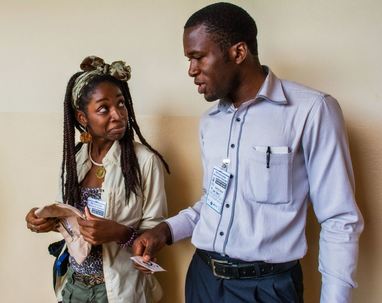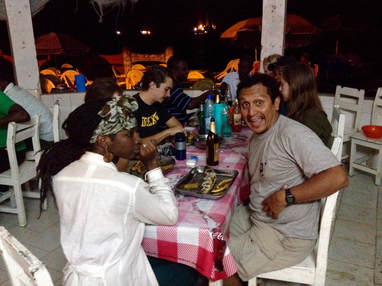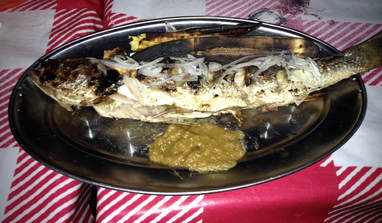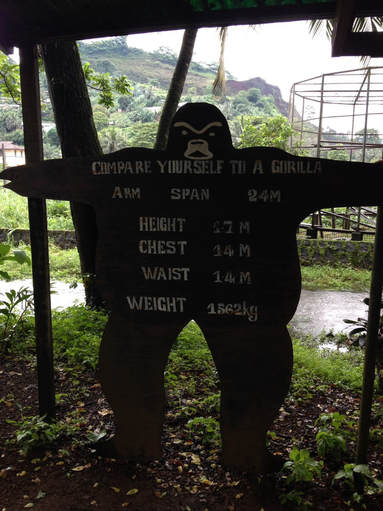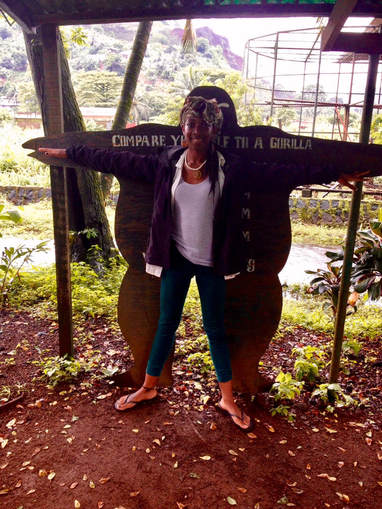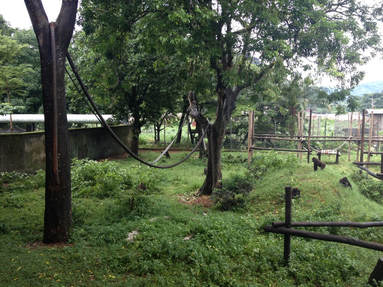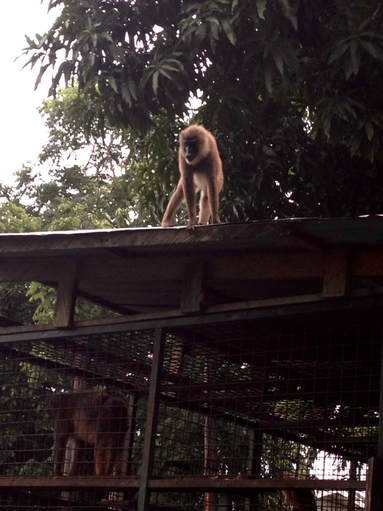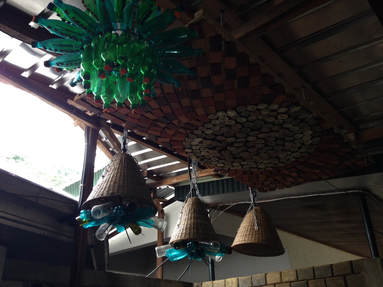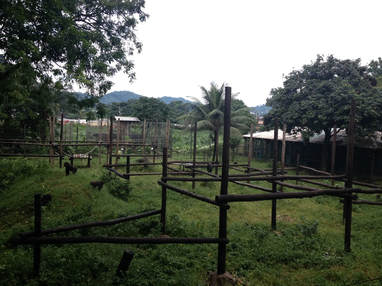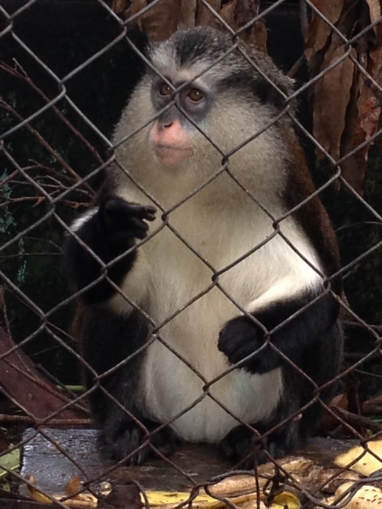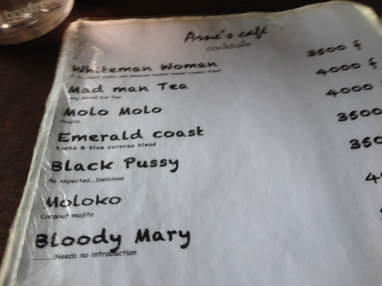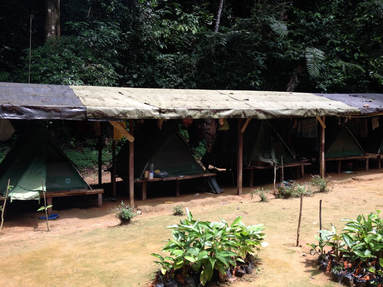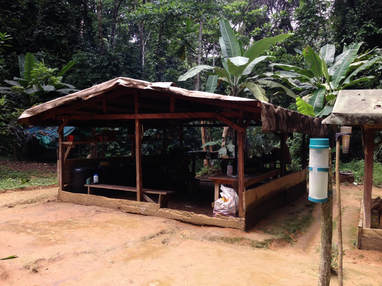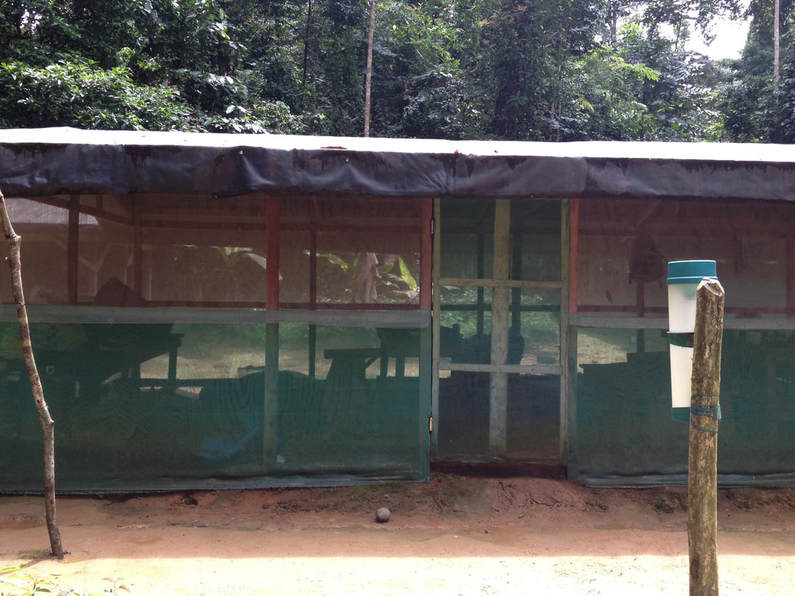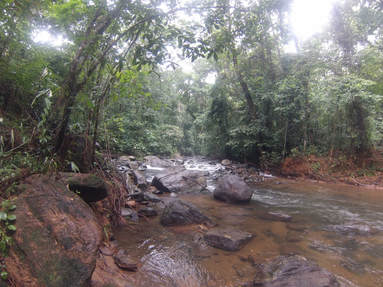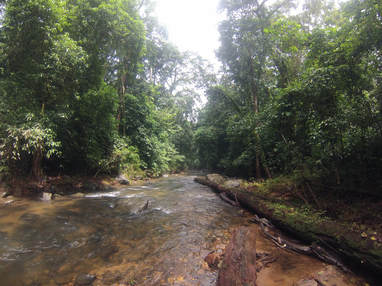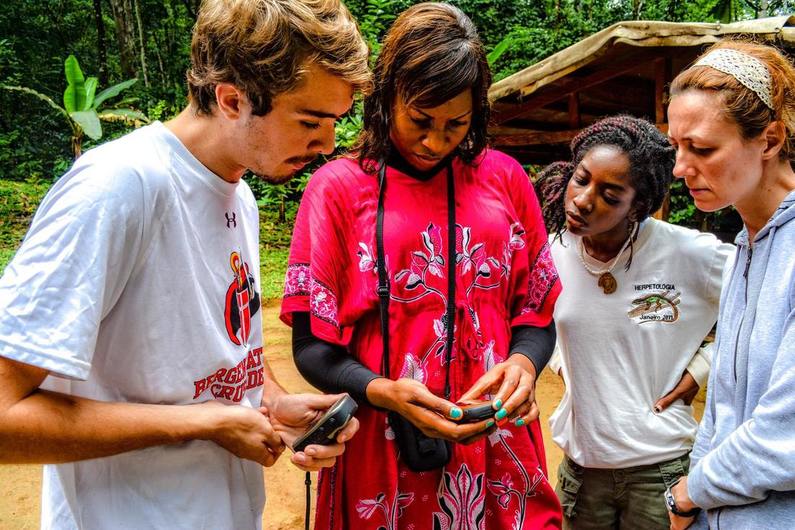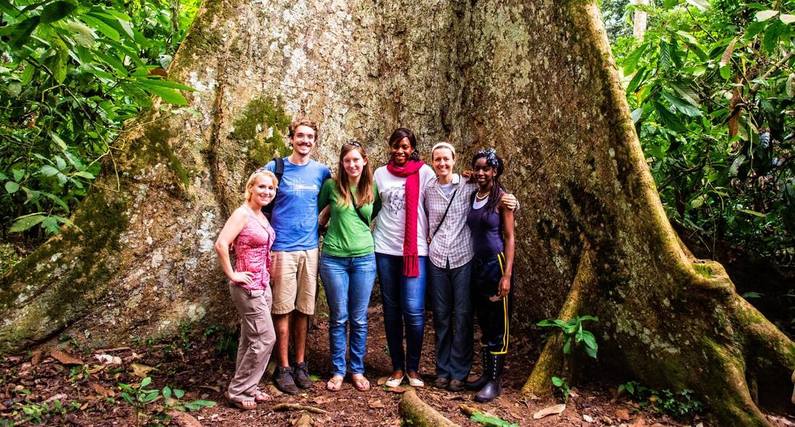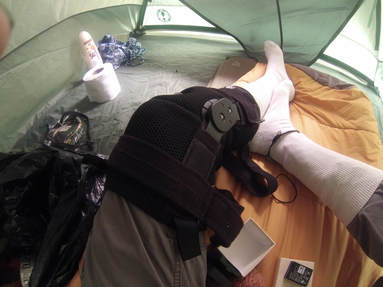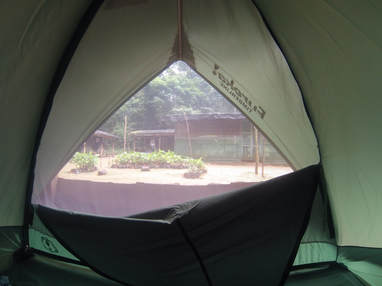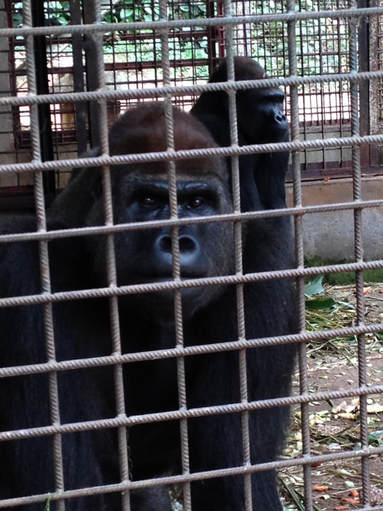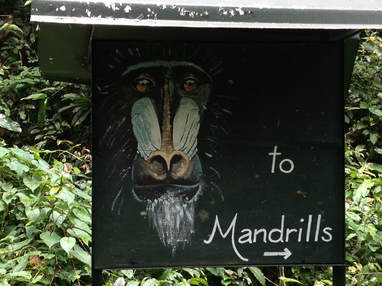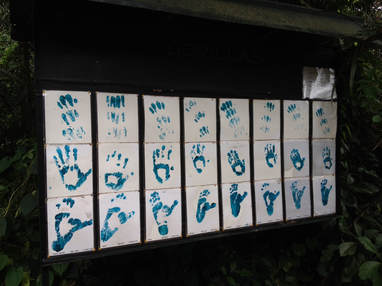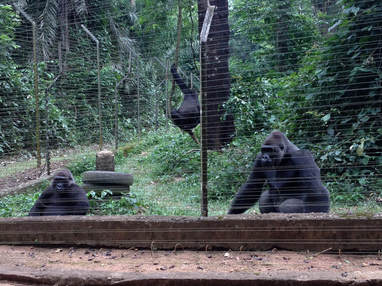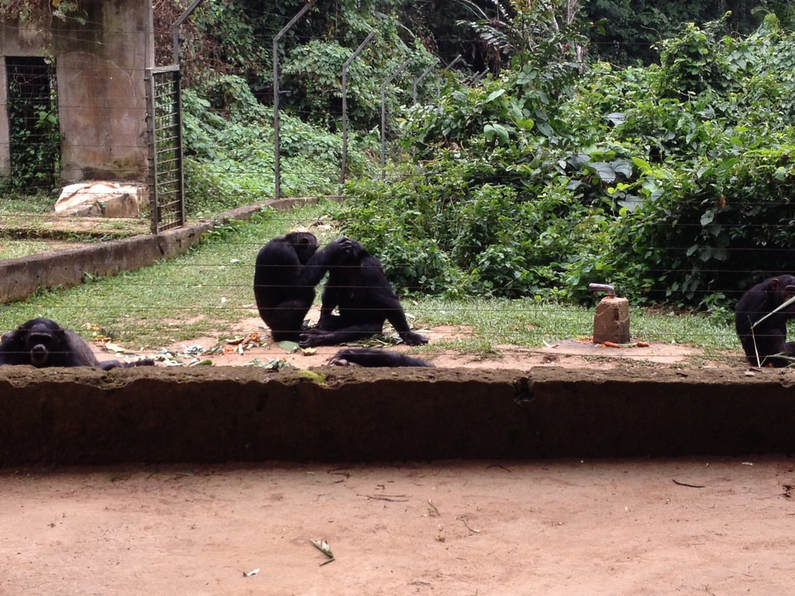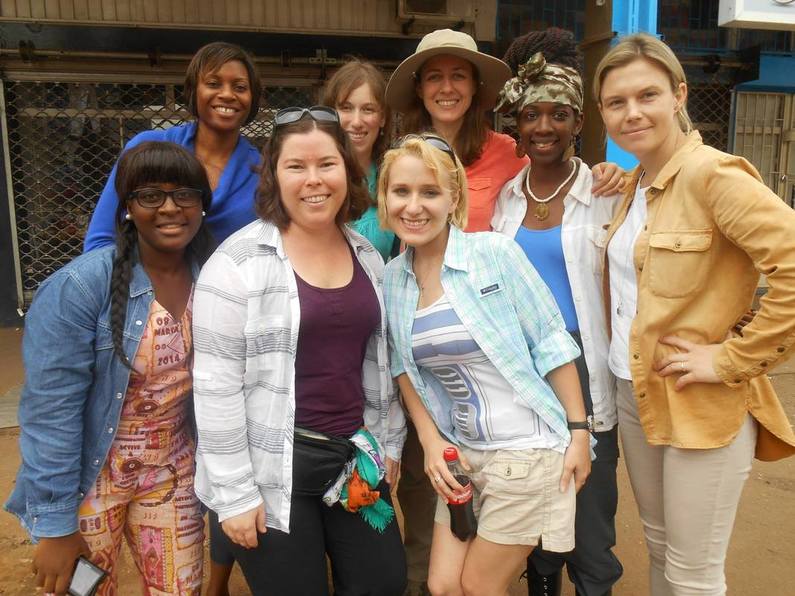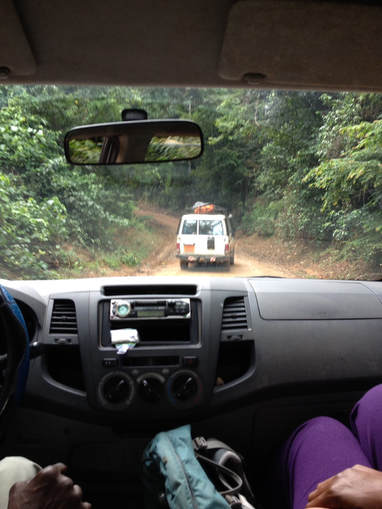|
This Saturday, I’m going to Kenya. It is quite literally a dream come true. I am so excited to see all of the cultural and natural beauty that I experienced through magazines and TV up close and personal. Going to a primate conference in Nairobi is not how I ever imagined getting there, but it works for me! In anticipation of this trip, I started thinking about my first trip to Africa, to Cameroon back in 2014. What an incredible experience. I was there for a professional development workshop (see my research page) but got so much more out of it. The airport in Yaoundé was a little different than any other. I had to show my luggage receipt in order to get my checked bag (good thing I didn’t lose it!). There were also several money changers at the door, ready to exchange Central African Francs (cfa) for foreign currency (perhaps at a better rate than formal financial institutions). On the way home to the US, there were people administering polio vaccines at security – I’d never seen that at the airport before! But like all airports, it was filled with lots of people trying to get to their next destination. I was supposed to meet the workshop TAs, the driver and the rest of the students arriving that day. Luckily, one of the TAs was a colleague from UCLA (where I was attending grad school at the time). He recognized me, while everyone else was not quite expecting a black foreigner to be participating in the course (local students were participating but not arriving at the airport), and he teased me for already being mistaken for a Cameroonian. I didn’t really mind, and it set the tone for the rest of the trip. Everywhere I went from then on, I was taken for a local. It was interesting having people approach me and start conversing in French and being confused when my ability to communicate was limited to “ça va?”, “bon, ça va?”! On a few occasions, when I didn’t admit to my foreign posing quickly enough, some subsequently tried a few local dialects until a meekly whispered “English?” at them. But people were mostly great and were intrigued to learn I was American. They’d ask me questions about my background and comment on how I could certainly be Cameroonian, and speculated on which ethnic group my features might correspond to. I loved being so fully embraced by a culture to the point of being claimed. Only one person ever implied that it foolish for me not to know where in the motherland I came from, and I didn’t have the energy, patience or will to disrupt all the other good vibes I was getting to explain to him why such was the case. Outside of this, and despite the occasional extortion at checkpoints by local police while traveling between cities and rarely some (understandable) impatience on the part of vendors dealing with confused foreigners – the trip was extremely pleasant for me.
From Limbe, we passed through the coastal city of Douala (the financial capital and Cameroon’s largest city) on our way to Ebo Forest. We didn’t spend more than one night in this bustling city but it was clearly a business center and the streets were crowded with vendors selling everything from food to clothing to electronics. It was a good last opportunity to pick up any needed supplies before heading to the wilderness.
By far, my favorite part of the trip was the time spent in Ebo Forest. To get there, we drove from Douala to a remote village on the edge of the forest. From there, we trekked in 18km (that’s roughly 11 miles), with river crossings, to the camp site where researchers are stationed for field work. That is the farthest I’ve ever gone in one day with a crap load of gear. Luckily, the real heavy stuff was carried by hired porters, local villagers who are in the best shape I’ve ever seen humans in. They carried the heaviest stuff and still beat us there by a few hours. And this research site is the real deal. There is no fancy research station with electricity and running water. This was legit camping with tents, mosquito nets, a dugout latrine, bathing in a river and surviving in a perpetual state of dampness. I freaking loved it. I won’t lie, I did miss the indoor plumbing, but it was so worth going without it to see this incredible forest. True wilderness. A place that not many people get to see. We spent a wonderful 5 days there. AND we saw chimpanzees! I mean, up close! They were incredible and beautiful and terrifying. Our amazing guide found a huge group, with young juveniles. But they were not happy with our presence and let us know it. It probably didn’t help that we startled the first one we saw when one of our group slipped and fell. The noise got his attention, and he dropped like a flash from the tree he’d been napping in and ran off to the left where the rest of the group was chilling. The cacophony of their alarm calls and warnings was impressive and I admit that while totally stoked to see such an imposing animal, I was simultaneously terrified! So I hung back a bit as we followed them a ways until they crossed a valley we couldn’t navigate. It was AMAZING. It happened so fast, I don’t think anyone got photos… On one of the day hikes, I hurt my knee after slipping on a wet rock. I had to sit out the last day of hikes as a result trapped in a graciously lent knee brace from another participant. I was bummed, but I spent the day taking in the beauty around the base camp, and for only that reason do I have any photos in Ebo at all. I was so absorbed, I had forgotten to take any during the hikes. The next day, we had to trek the 11 miles back out to the village. And that was quite painful. And everyone was so supportive in helping me through it, including one of the porters who very gently wrapped my knee, which helped tremendously. And I healed, so it was certainly worth the pain. Highilight Reel - A few short clips from Ebo Forest with super dramatic music
Though a mostly wonderful experience, I felt quite a bit of tourist’s guilt while in Cameroon. I could feel my privilege as I saw the poverty present in many of the places we visited. While I could appreciate the beauty in the country, I wasn’t blind to its struggles. Of course, I’ve seen poverty before, here in the US, in Mexico, in Brazil. But in Cameroon, it was unlike anything I had seen before. Maybe the poor are better hidden from tourists in the other places, their more advanced infrastructure providing a mask. I don’t know. But it always makes me think about how our privileges color our perceptions of the world and what can be done. For example:
I don’t want to end the blog on a sad note, though I felt it was necessary to share that. I loved the workshop and the field trips. I loved meeting all the people involved. I was so happy to finally have made it to the continent of Africa. Cameroon, though imperfect like everywhere else, is a beautiful country. From the beaches to the forests, in its languages, in its music and dance, in its clothing, in its food and for me most of all in its wildlife.
2 Comments
5/19/2024 04:47:59 pm
Possessing an update to the present state of affairs, you can have confidence in news channels to discover more to the pandemic. Besides, it is necessary too and will assist you to stay tuned in to the today's situation. Still, spending any all-time taking a look at the corona contamination related info can boost the stress tier. Take a break from online web 2 . and info platforms will to take out the panic and anxiety. Thus, you’re able to maintain a normal functioning lifestyle. In that quarantine stage, try to focus more relating to yourself and steer clear from toxic landscapes.
Reply
6/19/2024 05:44:20 am
I love your pilgrimage guidance; it goes beyond mere travel tips, offering a spiritual journey through meaningful destinations. Your thoughtful reflections on cultural sites and historical landmarks have enriched my travels, leaving a lasting impact on how I approach each new adventure. Thank you for sharing your profound insights and guiding us through transformative travel experiences.
Reply
Leave a Reply. |
J.C. BucknerAssistant Professor, University of Texas at Arlington Archives
June 2020
Categories |
Illuminating the Diversification of Evolutionary Radiations
Adventure Log
stories of current and past fieldwork and explorations of nature.
Proudly powered by Weebly
